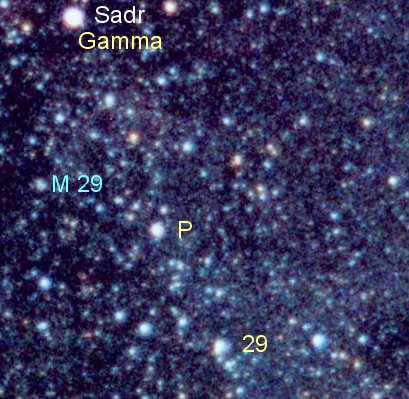
 |
This wonderfully-rich segment of the Milky Way in Cygnus (roughly 3.5 degrees wide) holds a number of treasures that start with Sadr (Gamma Cygni), then down and to the left the luminous blue variable P Cygni, and at bottom center, the Lambda Bootis/Delta Scuti star 29 Cygni. Reddish interstellar clouds flood the image. The compact open cluster Messier 29 lies near the left edge. |